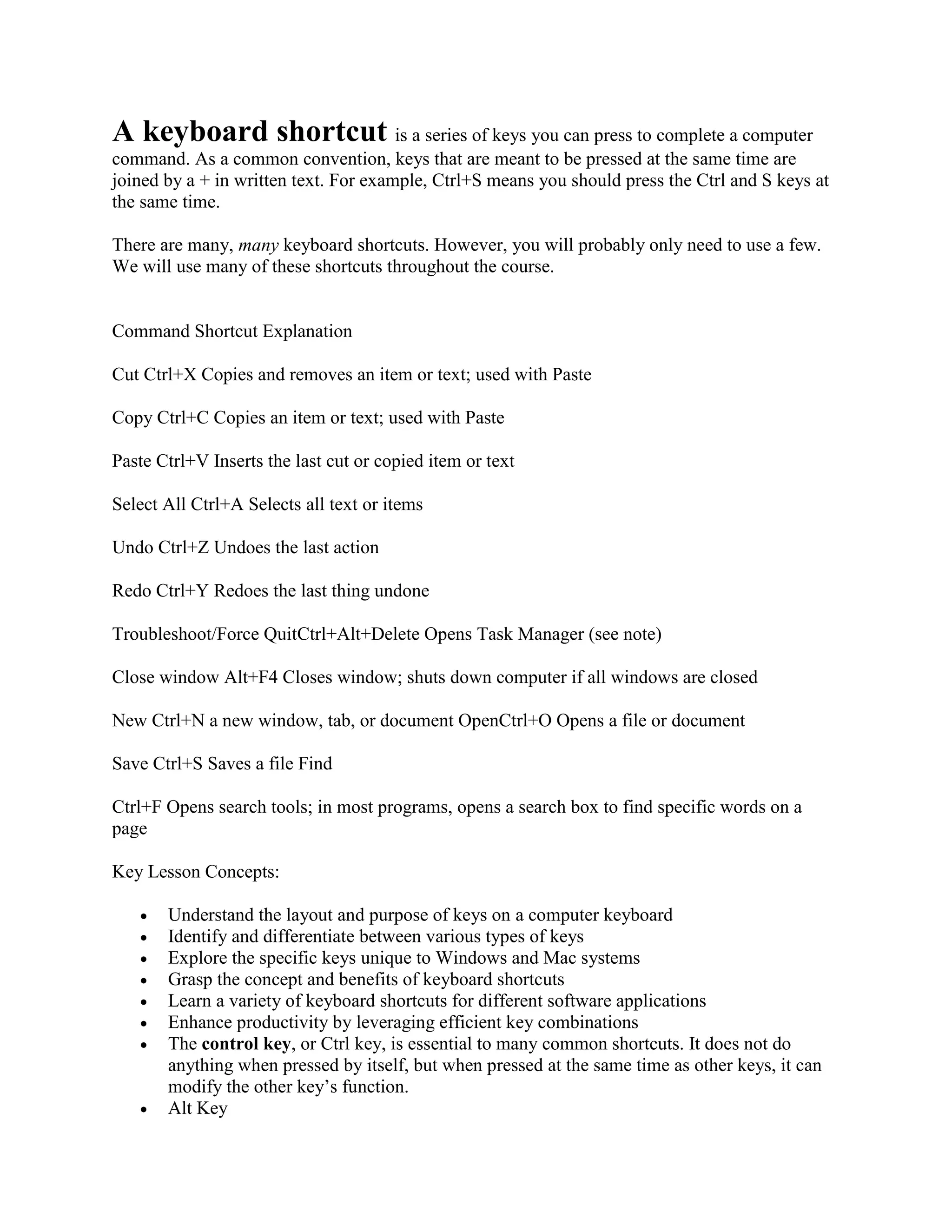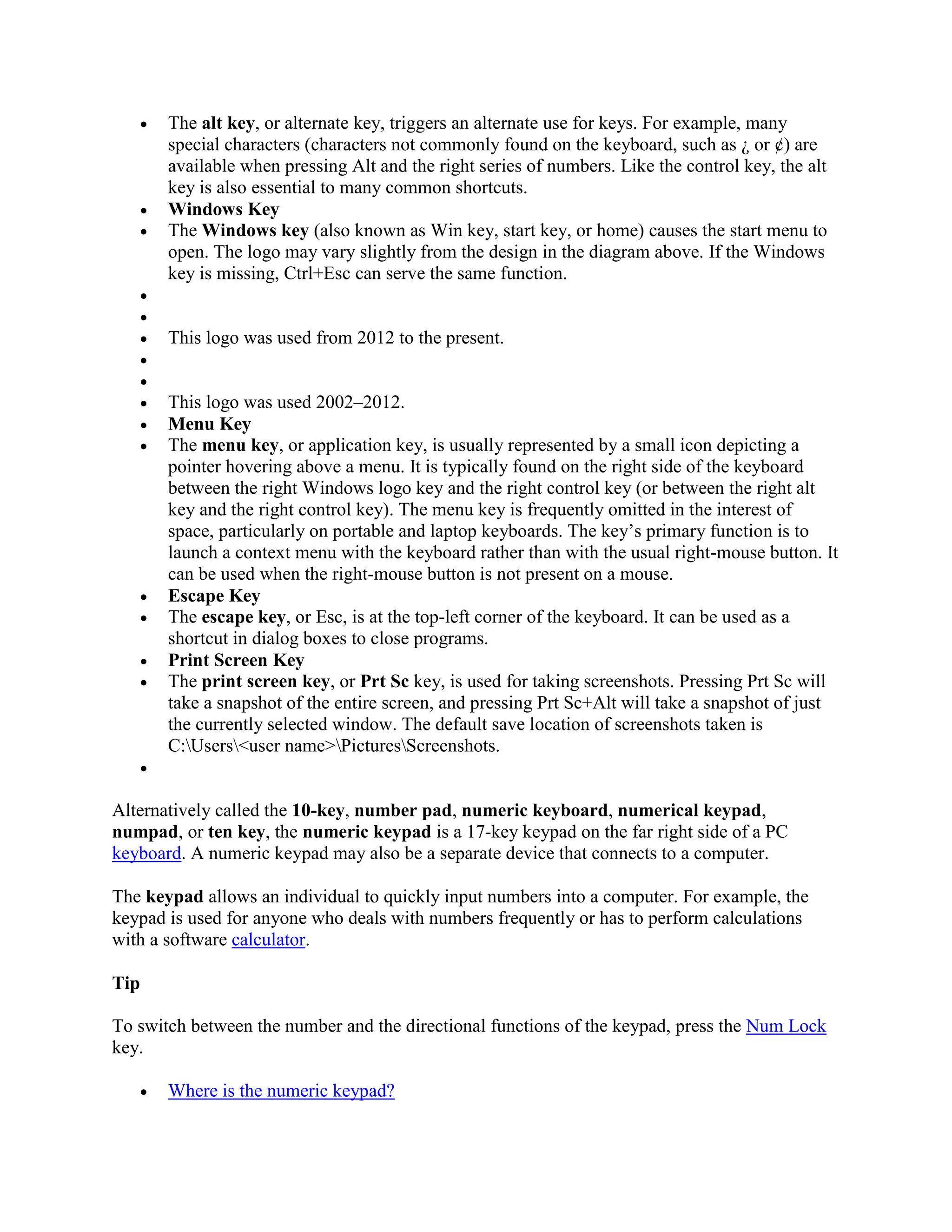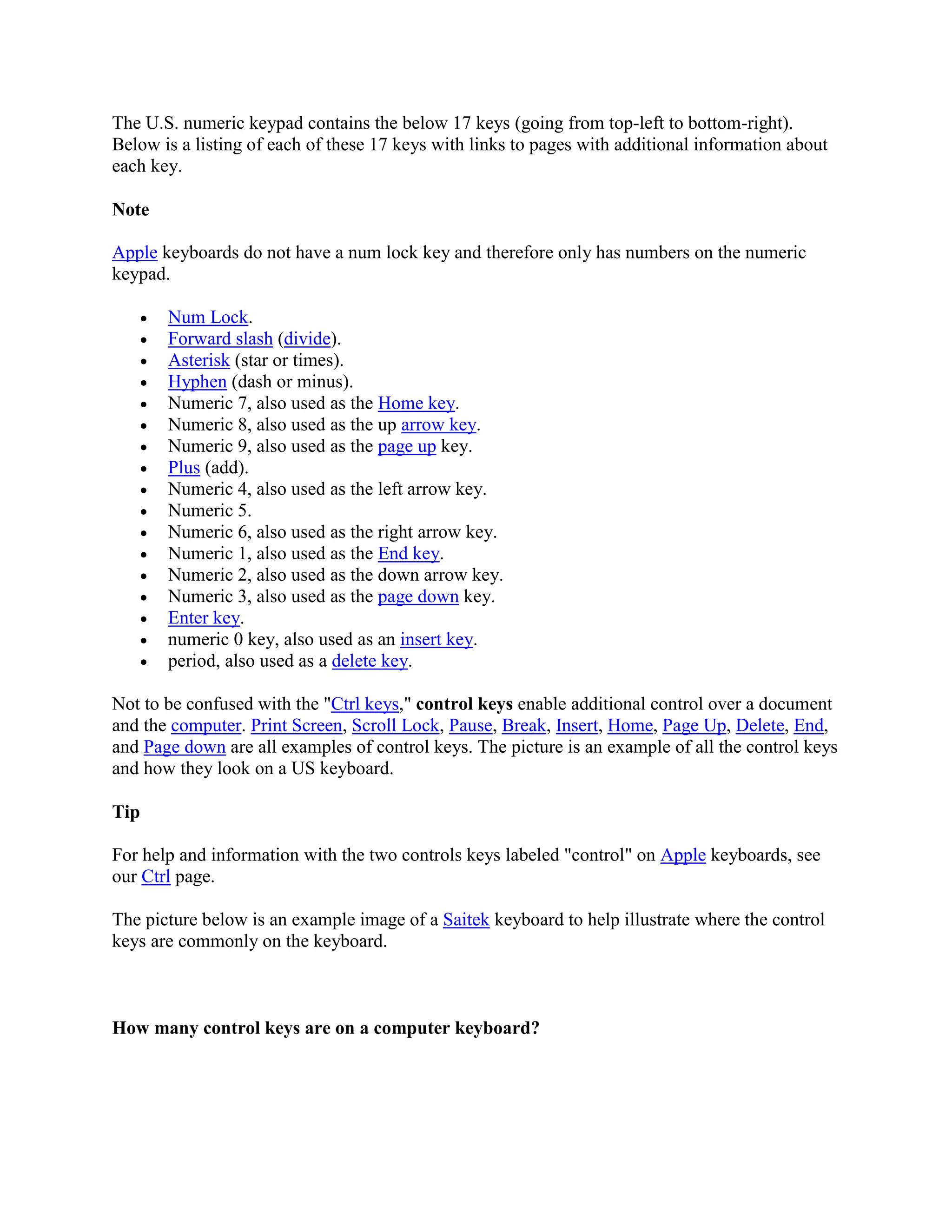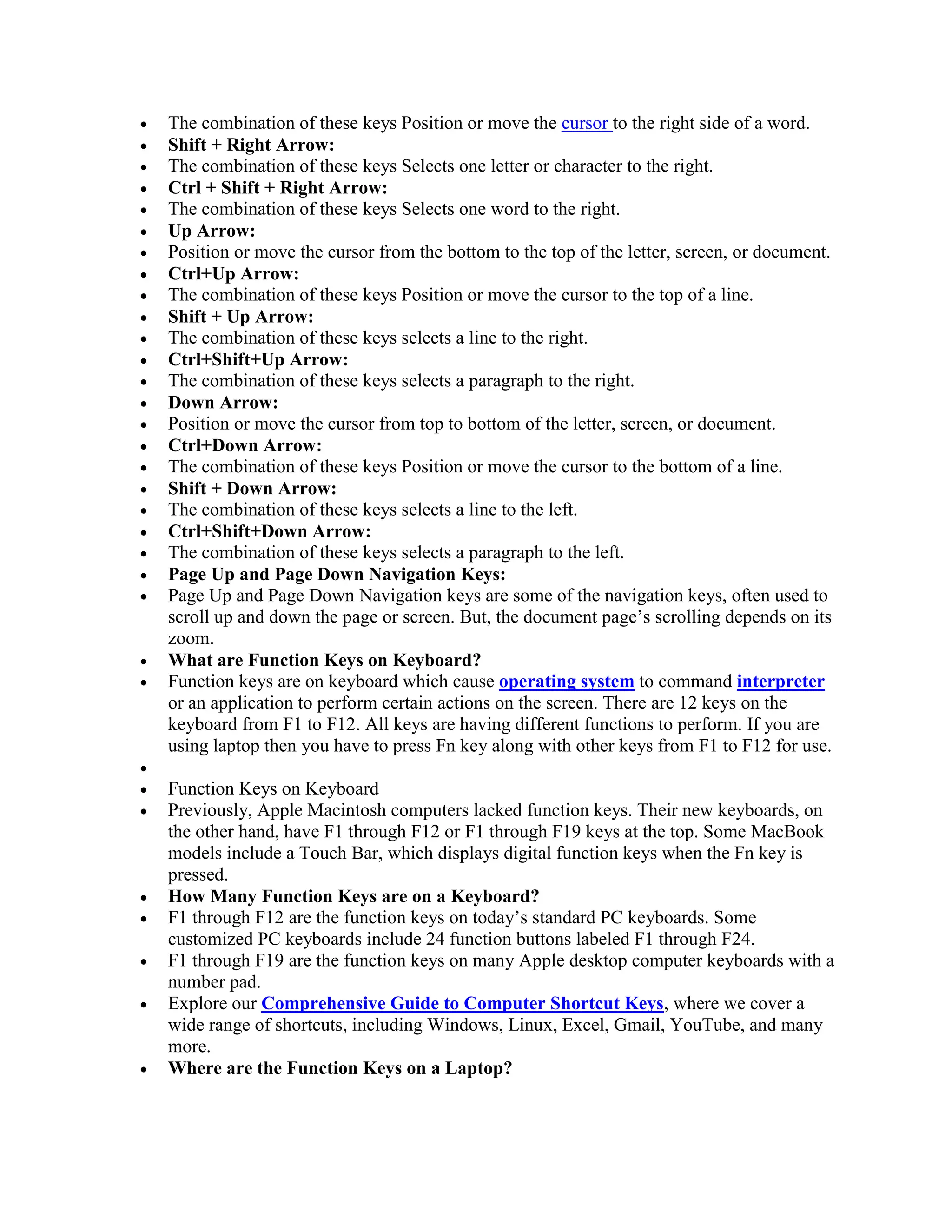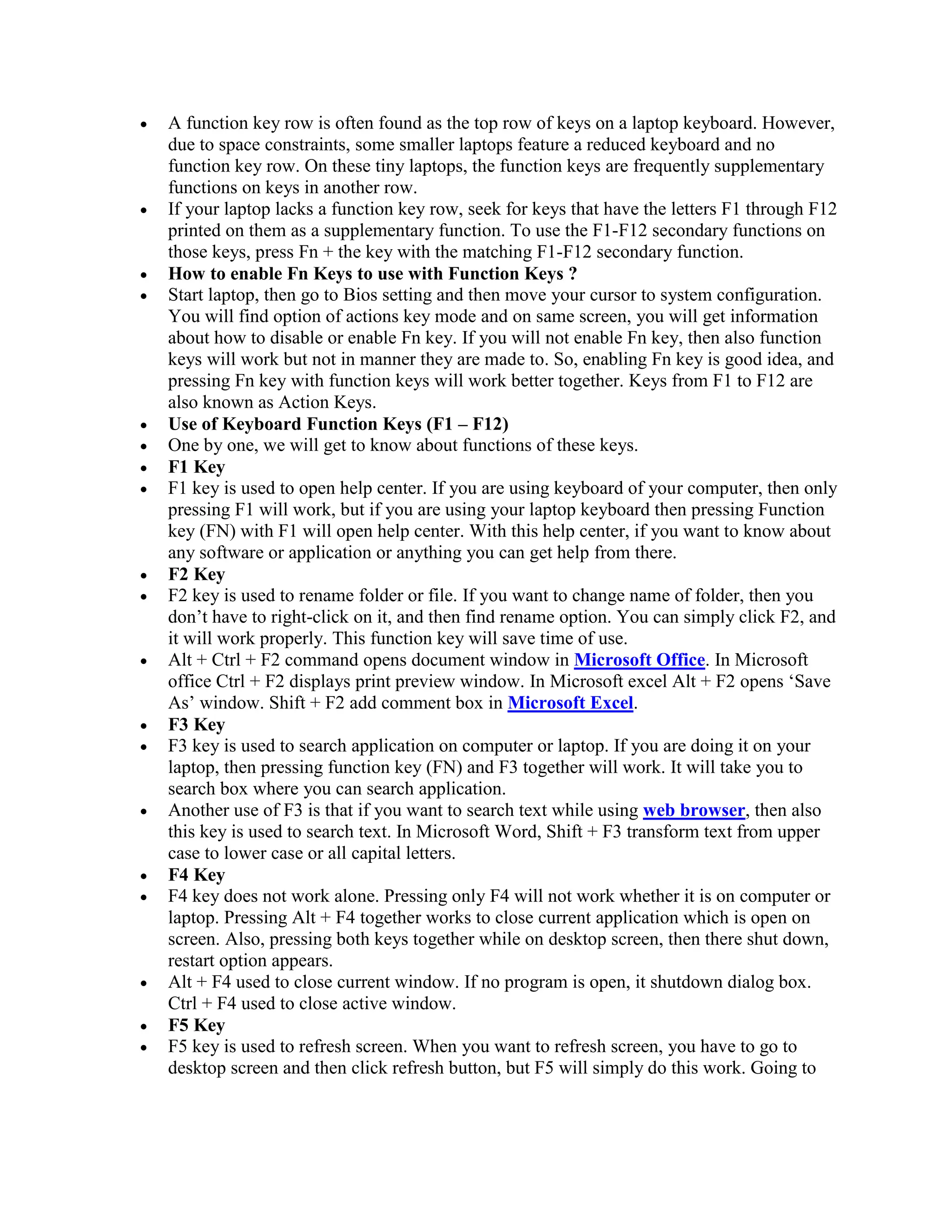The document explains keyboard shortcuts and keys, detailing their functions and benefits for enhancing productivity on computer systems. It covers common shortcuts like cut, copy, paste, and various key types such as control, alt, function, navigation, and numeric keys, along with their roles in different applications. Additionally, it includes information on typing efficiency, particularly with the numeric keypad and its importance for numerical input.
